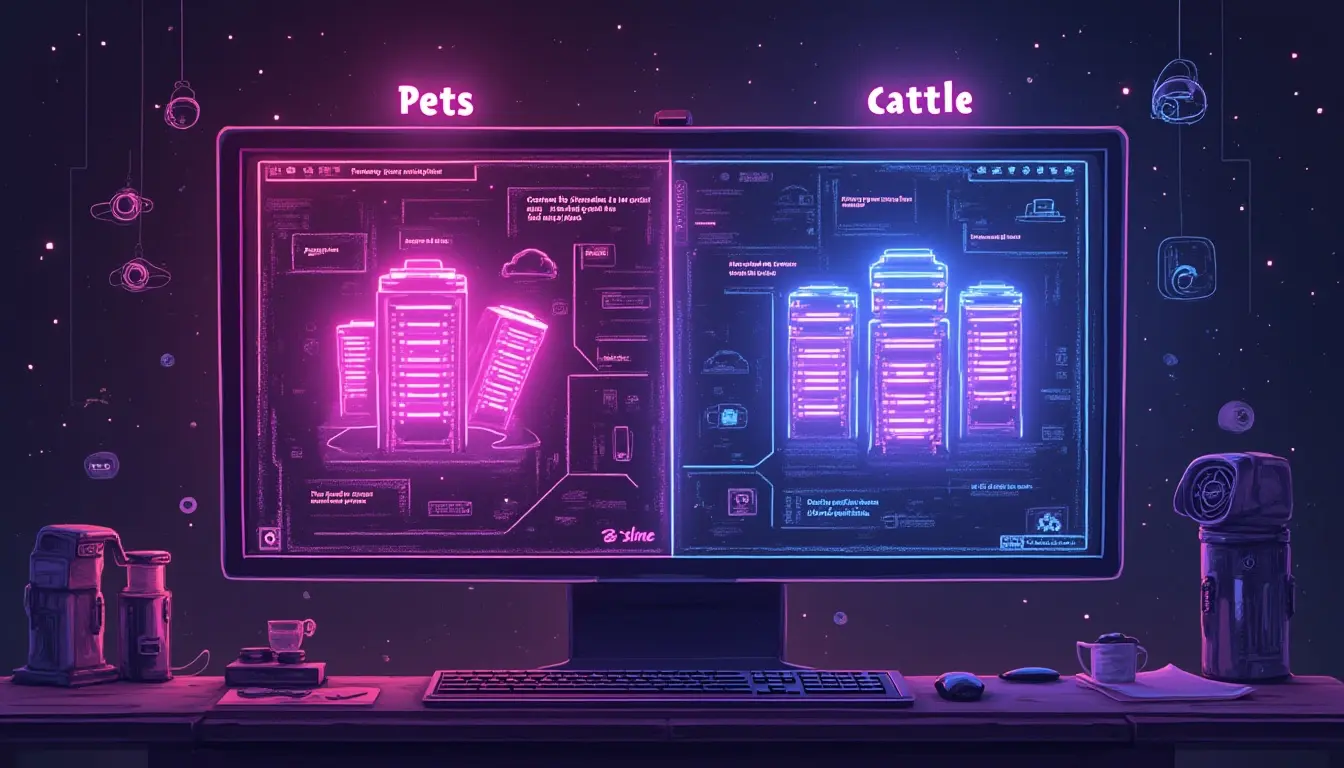Cattle vs Pets: Revolutionizing Server Management Philosophy

Share
Table of contents:

Picture two different approaches to managing farm animals - lovingly caring for individual pets with unique names and special attention, versus efficiently managing large herds where individual animals are replaceable. This powerful metaphor transforms how modern organizations think about server management, shifting from treating servers like irreplaceable pets to managing them like interchangeable cattle.
This revolutionary paradigm fundamentally changes infrastructure operations, enabling unprecedented scalability, reliability, and cost efficiency. It's like evolving from artisanal craftsmanship to mass production - both have their place, but cattle approach delivers transformative business benefits.
Understanding the Pet Server Mentality
Pet servers receive individual attention, custom configurations, and careful manual maintenance. Each server has a unique personality, custom software installations, and irreplaceable characteristics that make administrators treat them like beloved companions.
Classic pet server characteristics include:
- Unique configurations - manually customized settings and software installations
- Personal names - servers named after people, places, or memorable references
- Manual maintenance - administrators log in individually to perform updates and fixes
- Irreplaceable nature - losing a pet server creates significant operational disruption
These approaches work like traditional IT management, where skilled administrators nurture individual systems through careful attention and specialized knowledge, creating deep dependencies on specific configurations.
Embracing the Cattle Server Revolution
Cattle servers are identical, automatically provisioned, and easily replaceable through standardized processes. When cattle servers fail, they're simply terminated and replaced with fresh instances rather than receiving individual medical attention.
Strategic Business Benefits and Transformation
Organizations adopting cattle approaches report 60-80% reduction in operational overhead while achieving dramatically improved system reliability. Automated provisioning eliminates human error while enabling rapid scaling during peak demand periods.
Financial services companies leverage cattle infrastructure to handle trading volume spikes, automatically spawning additional servers during market volatility. E-commerce platforms use cattle approaches to manage holiday shopping surges without manual intervention.
Implementation Technologies and Tools
Infrastructure as Code tools like Terraform and CloudFormation enable cattle management by defining server configurations through version-controlled scripts. Container orchestration platforms like Kubernetes epitomize cattle philosophy by automatically managing application instances.
Modern cattle implementations rely on automated monitoring, self-healing systems, and immutable infrastructure principles that prevent configuration drift through systematic replacement cycles rather than patchwork maintenance approaches.











